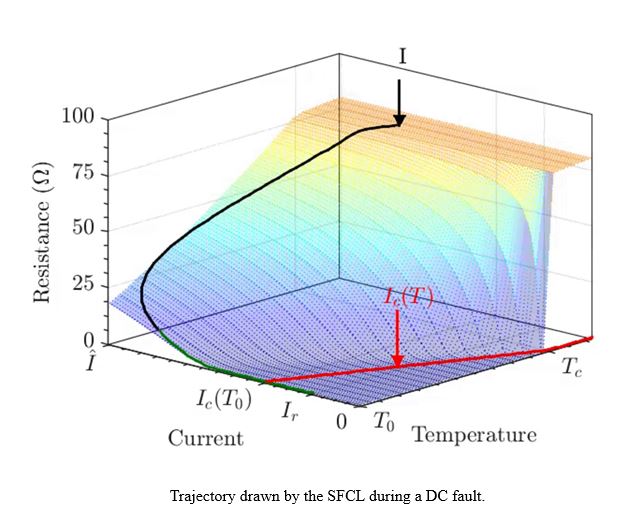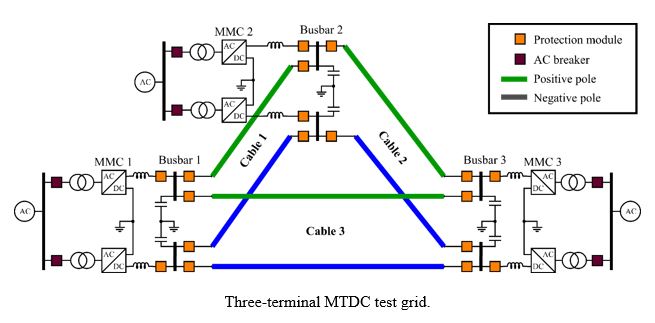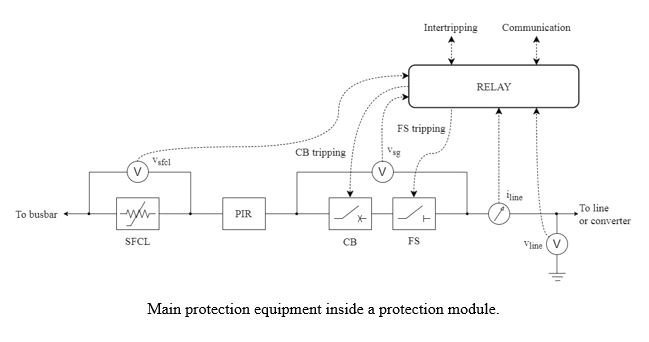Thesis William LEON GARCIA
“Protection strategy for HVDC networks”

Multi-terminal high voltage direct current (MTDC) grids, or supergrids, are considered an interesting solution to integrate large amounts of renewable power and release congestion of existing AC power grids. Nonetheless, safe and reliable operation of such grids require the development of new DC protection systems. Two main difficulties for the fault current interruption are well-known: the absence of zero crossing and the high rate of rise and magnitude of short-circuit currents produced by transmission cables and AC/DC converter stations. In selective fault clearing strategies, DC circuit breakers (DCCB) must be either ultra-fast or use fault current limiters to ensure a selective isolation of the faulty transmission line before the current reaches excessive values. DC reactors located at line ends could reduce the current rate of rise and increase the time available for the fault discrimination and interruption. Nonetheless, this solution remains insufficient to limit the steady-state fault currents and the energy stored by the inductance overdesigns a lot the DCCB.
A novel protection strategy for MTDC grids based on the implementation of breaking modules with both limiting and breaking capabilities is studied in this work. The proposed breaking module integrates a resistive-type (R-type) SFCL in series with a mechanical DC circuit breaker. The strong limitation reduces the speed and energy requirements of the mechanical DCCB and reduces surge currents through half-bridge modular multilevel converters (MMC), avoiding oversizing or redundancy of power electronic components. A deep understanding of the SFCL behaviour and an advance modelling allowed its integration into a selective fault clearing strategy for the MTDC grid. The use of busbar capacitors and proper sizing of SFCL devices ensure an inherent selectivity while respecting its thermal limits (hot spots). This enables the development of straightforward protection algorithms and the possibility of a continuous and stable operation of the DC grid during and after the fault event. Off-line simulation studies were performed in the electromagnetic transient program EMTP-RV®. A MTDC virtual mock-up was developed to custom grid parameters and perform simulation batches with different test case scenarios. Furthermore, the SFCL model was cleverly implemented to analyse the thermal stability of the device under conservative assumptions. The behaviour of the MTDC grid under fault conditions was described and the performances of the proposed fault clearing strategy were analysed thanks to simulation results. To conclude, a real-time validation procedure is proposed and given as basis for future studies.





